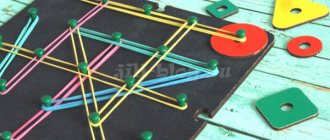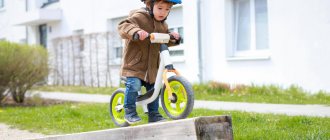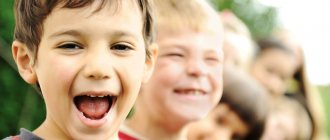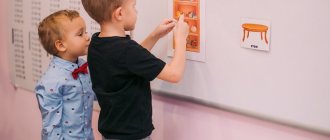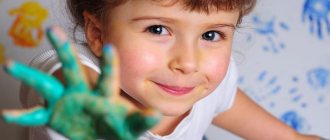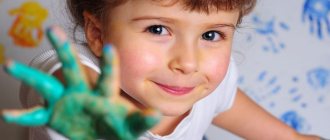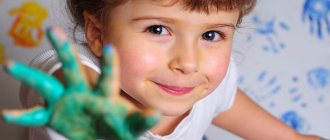10/08/2020 Reading time: 5 min 14270 0
Babies are growing rapidly. It seemed like only recently a small, squeaking bundle appeared in the house, and it’s hard for him to even focus his eyes, and now he’s already humming, looking around with interest and getting ready to celebrate his first birthday. 11–12 months is the age when the child begins to carefully try to walk with support or independently, he continues to cut his teeth, and he actively learns about the world around him. This period, which has come so quickly, causes natural anxiety in parents: what should a child be able to do in a year, is he developing normally. It’s worth saying right away that all children are individual, and you shouldn’t compare your baby with others, it’s better to focus on medical criteria.
Features of child development at 1 year
Compared to previous months, the baby becomes much more active and inquisitive. Parents begin to notice this after the first half of the year, but by the age of one year the child becomes even more intelligent and curious. Its weight is approximately three times greater than at birth, and on average is 10–12 kg, and such children are about 72–77 cm tall. Much depends on genetics, on how quickly the baby’s parents grew. The main thing is that the ratio of height and weight is organic, for example, a tall child weighs more. If the baby slightly does not fit into the criteria, there is no reason to worry, even if someone you know has a child at that age that looks a little different. Every baby is unique.
PROBLEMS IN DEVELOPMENT
— What rates of development are considered normal, and when is specialized help needed?
— In mastering motor skills, a deviation in one direction or another is acceptable for a couple of months. Fearless, hyperactive children begin to walk and even run at 9-10 months. But there are quite healthy babies who are cautious, afraid to move away from the support and take their first independent steps even after a year (in a couple of months they will definitely walk). Not everyone begins to speak their first words on time either.
You should always pay attention to alarming symptoms, which will be a reason to consult a doctor. More often they appear long before the age of 12 months - it is important to notice them in time and come for help in a timely manner.
Signs of developmental delay
| A child who does not walk for one year is one of the norms From early months we can talk about delayed psychomotor development if the child:
By the age of one year such a baby will not take his first steps. Therefore, at the very first stages, it is important to carry out comprehensive treatment aimed at improving motor activity and normalizing muscle tone. | One year old child does not speak Symptoms often appear at 2-3 months of age when the baby:
The age of 1.5 years becomes a cause for concern. If by this age the child has not spoken simple words and cannot show objects in the picture, you should immediately seek help. | Other symptoms of developmental delay A child requires close attention from a pediatrician if:
|
Physiological changes
Starting from one year of age, the growth rate will slow down slightly. This is completely normal: only in the first 12 months of life the baby grows so rapidly, then the process will become a little less rapid.
Weight loss.
Strictly speaking, weight itself does not decrease - only the rate at which it increases. The baby plumpness is gradually starting to go away, but some of it still remains. Over time, the baby will gain weight more slowly, and this indicates his normal development.
Teeth.
At the age of one year, a baby already has several teeth erupting - on average up to 8. It is worth showing the child to the doctor if he has not developed a single baby tooth in one year. When they cut, the baby becomes restless and often has trouble sleeping at night: he feels uncomfortable and this makes it difficult to sleep. Doctors give recommendations on how to reduce discomfort for a child during teething.
Feet.
The baby’s teeth are still flat and no bend has appeared on them. This will pass over time when the child gets used to walking on his own, and then the fat pads on the feet will disappear. If the baby has already begun to actively walk, the pads may disappear earlier, and a healthy bend will begin to appear on the legs. The doctor will examine the baby’s legs during a routine check-up, and he will tell you if everything is fine with them.
How does a child's speech develop before one year of age?
The baby begins to master and make the first sounds at 3 months. As a rule, the sounds that come easiest during this period are n, k, g. A six-month-old baby understands familiar words from adults, reacts to them, and pronounces the first syllables: ma, ba. By 8 months, speech develops to more complex sounds: p, b, m, a, e, k, g. The baby tries, with the help of adults, to form syllables from these letters: pa, ba, ma, gu. Walking becomes the first example of speaking.
Until one year of age, children have a more developed emotional side of speech. They watch the lips and faces of adults, remember every sound, its pronunciation, and emotional coloring. Baby babble appears around the age of one year, when the baby begins to say the first words: mom, dad, give, lalya, na, zya (you can’t), di (go). The one-year-old baby understands the phrases “you can’t”, “come to me”, “crawl”, “go”, “kiss mommy”.
Motor activity of the child
What a one-year-old child can do cannot be compared with his skills just a few months ago. He has already learned much better how to handle his own body, he is very active, moves a lot and in a variety of ways. The baby can calmly hold two objects in his hands, can assemble a pyramid, or even hold a spoon at the table while feeding. Of course, in many activities he still needs the help of his parents: such young children are able to concentrate on something for only a few minutes.
Active movements.
The child crawls, stands on his legs, including from a squatting position, and gets up on his knees independently. He can climb on or off a chair or sofa, and with the help of his parents, he can go up or down the stairs. Children are very inquisitive, so at this age they should not be left near open windows or dangerous objects. The kid can figure out how to get to the windowsill using a chair. Fine motor skills become much better: the child can pick up a small object with two fingers, take a cup and drink from it.
Dancing.
Little children love music. Many people notice that, having heard an interesting melody, the baby begins to dance actively: he likes it. Some not only dance, but also try to sing along to children's songs. If the child does not do this, you can show him a simple dance, and he will begin to repeat without prompting from mom or dad.
Moving quickly on all fours
. Almost all babies at this age are already crawling, and quite quickly. Some skip the stage of walking on all fours and immediately stand on their feet, but this does not happen for everyone. Most often, a one-year-old child moves calmly by crawling.
Walking with parental support.
Some children are already starting to take their first steps. Few people begin to walk independently, but most babies can already walk unsteadily while holding mom or dad’s hand. Some people try to walk while holding onto walls or other support. However, there are also children who are in no hurry to start walking on two legs, and this is completely normal. If your child has not gone yet, there is no need to rush him. Dr. Komarovsky suggests that in such cases, holding off on walking may even be useful: walking upright is a serious load on the back, and perhaps the baby is simply not ready for it yet [1].
SKILLS
— Ekaterina Borisovna, what can a 1-year-old child do and say?
— During the first year, the baby makes a huge leap in both physical and mental development. From a helpless screaming baby, he turns into a completely intelligent, thinking little person.
Child development at 1 year
| Speech skills |
|
| Psychomotor development |
|
| Emotional development |
|
| Mental development |
|
| Everyday skills |
|
— A 1-year-old child can do a lot, but what skills are not considered mandatory?
- Independent walking or crawling, since the child may skip the crawling stage and learn to walk a little later. It is not necessary to know how to use a potty and climb stairs, or have a set of ten words: 2-3 are enough, provided that the child tries to repeat new words after adults.
— Does the physical development of one-year-old children differ?
— By the age of one year, a child usually triples his birth weight, but monthly weight gain decreases and on average does not exceed 350 g, height gains range from 1 to 1.5 cm. Many babies at this age visually lose weight, as they begin to actively move and stretch in height, but weight often stays the same.
Boys
| Girls
|
— How many teeth does a 1-year-old child have?
“Children at this age should have eight front teeth, but if there are twelve or just a pair, these are also variants of the norm.
Psycho-emotional development of a child at 1 year old
The baby is very curious, carefully looks at the behavior of adults and tries to copy it. It is important to remember this when parenting: even if the child does not listen to you, he will definitely adopt your behavior. The child is very interested in things that fold and come apart, so he may be interested in cubes, pyramids, and putting them together into structures. Some people like to leaf through books, hide and look for objects. Kids at this age already show a wide range of emotions; their vocabulary includes up to 10–15 simple words, they recognize different animals and remember the names of their parents. A one-year-old child is able to understand a simple instruction: “come”, “give”. He begins to become interested in games with a story. Long-term memory also improves: the baby remembers what happened a few days ago. He recognizes animals and different objects, and can learn to use some of them, for example, open a cabinet.
At what age should you worry if your child doesn't start talking?
Let us remind you once again: each child is an individual with his own individual characteristics. The age at which each stage of speech development occurs varies greatly among different children. If the baby said his first words a month or two later than normal, it’s okay. You can talk about a possible problem only if the baby is behind by a stage or more:
Why doesn't the child pronounce his first words?
If a child shows signs of speech delay, a medical problem must first be looked for. In addition to conditions associated with abnormalities of brain development (cerebral palsy, autism and others), these may be hearing impairment and physical defects of the speech apparatus - the larynx, vocal folds, pharynx, jaw muscles.
If they are ruled out, it is most likely a temporary psychological problem. The baby will outgrow it with the help of a speech development specialist. And then the parents will dream about something else - how to silence him 
When does a child start speaking if the family speaks two languages?
If a child is in a bilingual environment from birth, he will begin to speak later than his peers. But in both languages at once! The reason is obvious: the baby has to figure out on his own why adults pronounce certain sounds during different actions, and if they call one thing in two words, it is much more difficult to understand the mechanics of “speaking.”
It is not at all necessary that mom and dad speak different languages. The source of alternative linguistic knowledge can be a grandmother, a nanny, or older children in a nursery. If you want your child to know two languages from infancy, just be patient while waiting for the first words. But if your plans do not include teaching your baby the nanny’s native language or the grandmother’s special dialect, ask them to speak in the clearest Russian possible in the presence of the baby.
The baby learned his first words. What's next?
Speech is the basis of communication, which means that enormous opportunities open up for you to communicate with your child and teach him. Explain, tell, answer questions. And don’t forget in any case: it is important not only to talk, but also to listen, recognizing and taking into account the needs of the little person.
Features of the development of girls at 1 year
Psychologically, boys and girls at this age are still very similar. They are interested in balls and pyramids, games with a plot, toys with which they can interact in different ways. Therefore, you should not limit your child to, say, dolls if it is a girl. There are no significant differences in the weight and height of boys and girls at this age. But the psychomotor and mental development of girls may be slightly ahead of that of boys. This will smooth out later, but for now the baby can start walking earlier or, say, naming words.
Health of a one-year-old child
A visit to the pediatrician every year is considered a mandatory procedure. The doctor takes the necessary tests from the child and makes physiological measurements. The issue of child vaccination is also being addressed. It is also necessary to visit the following specialists: neurologist, surgeon, orthopedist. Additionally, it is advisable to consult an ophthalmologist and dentist.
An important component of a healthy lifestyle is maintaining the child’s personal hygiene. At one year of age, a baby can learn to wash his hands before eating and after a walk, as well as wash himself. If a child has grown at least 1 tooth, it is worth making friends with a toothbrush. And, of course, do not ignore evening bathing and rinsing in the shower.
How to check your child's development level
There is no need to make too strict demands; it is better to focus on the developmental features characteristic of this age. To understand how a child is developing and what he can do at 1 year old, you can do a few simple tests:
- see how the baby moves, how he crawls, whether he can walk, climb on or off sofas and chairs;
- assess gestures to see if the child can make meaningful gestures such as shaking his head or waving his hand;
- listen to his speech, understand whether there is at least one meaningful word in the baby’s speech;
- see how the child plays, what he is interested in, how his arms and legs work, whether he can use simple household objects;
- estimate the number of teeth;
- play with the baby, offer him cubes or a pyramid, see if he will start building a tower out of them or just throw them away.
Possible violations
At one year of age, a speech development disorder can be suspected. Experts have different opinions regarding the speaking of children from one to two years of age. Neurologists say that delayed speech development can be identified in the second year of a child’s life. The following pathologies are typical for this age:
- Rhinolalia (anatomical and physiological defects of the speech apparatus, leading to disturbances in sound pronunciation, changes in voice timbre).
- Aphasia (the child loses the ability to speak).
- Sensory alalia (when a baby incorrectly perceives an adult’s speech by ear).
- Motor alalia (failure to master an active vocabulary due to impaired expressive speech).
- Dysarthria (incorrect pronunciation of sounds due to organic lesions).
- Hearing loss (weakness of hearing, absence of it).
- Delayed speech development.
- General speech underdevelopment.
The last two terms often denote a complex of speech pathologies. SRD (speech development delay) is often diagnosed before the age of 3 years, when the exact diagnosis is unclear.
Child psychologists and speech therapists advise parents not to focus on how many words a child should normally speak by the age of one year. Children are given 3 years to master speech; before this age it is too early to talk about disorders or developmental delays. He may not speak at all until he is 2 years old, but by the age of 3 he can start talking non-stop. According to statistics, boys begin to master their first words later than girls. It is possible to talk about possible violations only by the age of 3 years of the baby’s development. It is worth showing the child to a neurologist or speech therapist if:
- by the age of 2 he does not know simple words: mom, dad, baba, give me, I can’t;
- there is no understanding of words starting from 1 year, when the baby does not respond to requests and comments from adults (hearing loss must be ruled out);
- the baby suddenly fell silent after active speech appeared;
- baby talk remains until 2 years of age;
- the baby does not try to formulate speech; he constantly pokes and hums to point to an object and voice a request.
Speech therapists do not advise getting upset if the baby has not mastered simple words by the age of 1, for example, such as mom, dad, grandma, grandpa, give, na, go. Perhaps, due to his psychological development, he needs more time than his peers to master speech. You can talk about speech therapy speech disorders only by the age of 3 years. You need to work with the baby, develop vocabulary.
Development activities
You need to work with kids: this has a beneficial effect on their development and helps in later life, including in adulthood [2]. This way, the child will begin to learn new skills and knowledge faster, which will subsequently help him with his studies and allow him to better and faster understand the surrounding reality. Remember that at this age you need to gradually give your baby more independence, for example, allow him to choose what blouse he will wear or what book he will read at night. Try to hold your child in your arms as little as possible so that he has an incentive to get to the right place on his own.
Music.
Children love musical toys, nursery rhymes and melodies. In addition, the more variety of pleasant sounds the baby hears, the more developed his hearing will be. Therefore, play children's songs, melodies and selections that are specially designed for young children. In addition, it will be easier for the baby to play to music; he may want to dance, thereby developing motor activity, or sing along - this promotes speech development. Of course, if he doesn’t like a certain melody (at this age children are already beginning to acquire their own preferences), it is better not to turn it on, but to turn on the one that suits his taste.
Dialogues and reading.
The more you talk to your child, the more words you use in dialogues, the more extensive his vocabulary will be. Long conversations with your baby promote speech development. Try to communicate with your child the entire time you spend with him: describe the objects he is looking at, while walking, point out various things and phenomena that interest the child and say their names. Try to communicate with your baby based on his childhood speech capabilities. When talking, name the words clearly and distinctly, so that it is easier for the child to remember them and repeat them, use soft and affectionate intonations: a child at this age perfectly recognizes and feels the mood of others. You can and should read little books. He himself is at this age
EDUCATIONAL GAMES
— Ekaterina Borisovna, what needs to be done so that the child develops well?
— Unfortunately or fortunately, there is no single correct model of education. Each child is individual. But there are basic principles on which full-fledged healthy development is built. The task of parents at this stage is to encourage in every possible way any attempts by the baby to explore the world and to make this process as safe as possible.
For example, if a child...
- opens the door - make sure he doesn’t pinch his fingers;
- climbs onto the sofa - provide for a soft fall;
- If he wants to eat on his own, give him a spoon.
Give your child the opportunity to choose independently - which toy to take, which direction to go for a walk, which swing to ride on. It is very important during this period to talk through all your actions and explain what is happening. This enriches vocabulary, helps develop speech skills and makes the world clearer and safer for the baby.
— What toys does a child need per year?
— There are a great many games for this age, and they do not require large expenses. You can simply play without purchasing any toys, or instead of buying expensive copies, you can make similar items yourself. Even playing with cereals or pasta of various sizes and shapes is useful. The main thing is to remember safety when working with small elements and not let your baby’s hands out of your sight for a minute.
How to develop a baby at 1 year old
Games for developing motor skills
| Games for the development of sensory and motor skills
| Speech development games
|
— Do I need to do special physical exercises?
— Gymnastics and massage are carried out daily at the same time, so that the baby is ready for the regime and awaits the procedure. Regular exercise has a beneficial effect on the health and well-being of the child. It is better to exercise an hour before or after a meal, in a playful way. You cannot forcefully insist on a lesson, and if the child is not in a good mood, it is better to postpone the “lesson” to a later date.
Basic physical exercises for children from 1 year:
- walking along a narrow path, an inclined plane;
- walking with side steps;
- running in place;
- jumping, squats;
- playing with a ball or other toys;
- crawling, climbing, overcoming obstacles;
- exercises to develop the upper shoulder girdle.
— Are educational activities for one-year-old children outside the home relevant?
— The child receives new information every minute, and even simple everyday activities develop and teach him. At one year of age, normal activities at home with mom are enough. Gymnastics, drawing, reading books, songs, walks - all this is an inexhaustible source of knowledge and life experience for a child.
Group classes at this age are pointless. The child cannot concentrate his attention on an object for a long time, gets tired quickly, and gets distracted. Additional contacts with strangers are also not beneficial for the still developing immunity.
— Then how to find a balance between development and relaxation?
— It is very important not to overdo it with early development and not to fill the baby’s time with activities, he must learn to entertain himself. The educational program in one year should consist of a maximum of 3 blocks of 10 minutes at different times.
For example,
- morning - gymnastics and outdoor games, pauses between blocks should also be carried out dynamically;
- day - sensory skills and games with pyramids, cubes, finger painting;
- evening - speech development, quiet reading, singing, playing with pictures.
Such classes will be most effective. Between them the child can walk, play, and relax.
Nutrition for a one-year-old baby
At 12 months, as a rule, a child’s diet includes, in addition to breast milk (or its substitute), an extensive range of complementary foods: per year, a child can eat almost everything that his parents eat. After a year, you can already allow your child to try foods that WHO experts and the Union of Pediatricians of Russia do not recommend: honey, fruit juices (yes, due to the high content of natural sugar, this drink is not intended for younger children), nuts and whole cow's milk. milk. The basis of the diet is “adult” food (3-5 times a day), breast milk and its substitutes - at the request of the child.
What should a 2 year old child be able to do?
By age two, children should:
1. Be able to navigate in space, that is, understand that the object is located:
• in something or outside of something (a ball in a box, a bear in another room);
• indoors or outdoors;
• above or below.
2. Be able to characterize the quality of objects, for example:
• that the cat is soft;
• scarf - prickly;
• napkin - dry or wet.
• water from the tap (or food on the plate) - cold or hot.
3. Be able to recognize parts of the body, know and be able to show:
• legs;
• hands;
• torso;
• head.
4. Be able to recognize:
• basic standard colors - red, white, green, blue, etc.
• big small;
• items and objects - a bear, a doll, a car, a house;
• shapes of objects - square, oval, star, circle.
Some children can use their fingers to count to 5.

